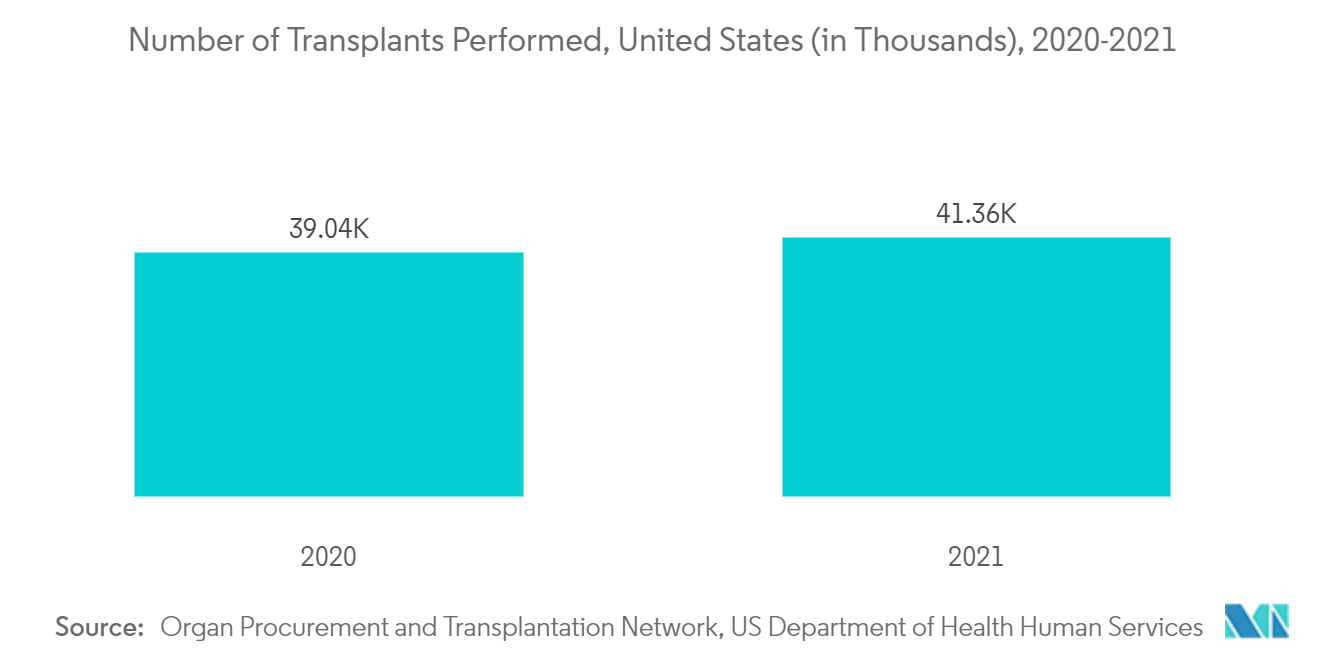Market Trends of Graft Versus Host Disease Treatment Industry
This section covers the major market trends shaping the Graft Versus Host Disease Treatment Market according to our research experts:
Corticosteroids Segment Expected to Witness Notable Growth in the Graft-versus-Host disease treatment Market
The corticosteroids segment is expected to grow owing to the growing burden of target disease and increasing research studies. The corticosteroids segment is expected to witness notable growth over the forecast period due to increasing research and development in corticosteroid and corticosteroid combination therapy to treat HCT patients with graft-versus-host disease. Furthermore, according to the article published in July 2021, by the National Library of Medicine, the absence of second-line treatment for patients suffering from steroid-refractory chronic graft-versus-host disease is concerning. It also demonstrates the huge scope of research that helps benefit the expansion of the graft-versus-host disease treatment market.
Additionally, according to the Organ Procurement and Transplantation Network of the United States Department of Human Health Services, around 41,355 transplants were performed in the United States in 2021. Since graft-versus-host disease is most commonly associated with and might occur after transplants, the demand for corticosteroids as an introductory therapy is likely to increase among the patient population, ultimately driving the segment growth.
Furthermore, research studies carried out to improve the efficiency of corticosteroids in the treatment are also boosting the growth of the market segment. For instance, as of June 2022, a clinical trial was ongoing. It is an open-label, multicenter, two-arm randomized trial that will evaluate whether the addition of ruxolitinib combined with corticosteroids is superior to corticosteroids alone in newly diagnosed high-risk aGvHD. It was reported that there is about a 50% response rate to first-line therapy with corticosteroids for acute graft-versus-host disease (aGvHD). The positive outcome of such clinical trials can improve efficiency and thus may lead to segmental growth in the future.
Thus, owing to the abovementioned factors, the market segment is expected to project growth over the forecast period.

North America Expected to Hold a Significant Share in the Market and Expected to do the Same in the Forecast Period
The North American region is expected to hold a significant share of the studied market owing to well-developed healthcare infrastructure, increasing research and development, coupled with a growing number of transplants. For instance, according to the data published by the Organ Procurement and Transplantation Network, operated under the United States Department of Health and Human Services, updated in July 2022, the total number of transplants performed in the United States between January 2022 and June 2022 was 20,663. Such an increase in the number of transplant procedures may, in turn, boost the demand for graft-versus-host disease treatment owing to the immune-mediated response between donor and recipient adaptive immunity, thus propelling the market's growth.
Furthermore, the approval from the regulatory authority is also contributing to the growth of the region. For instance, in September 2021, the US FDA approved the use of Ruxolitinib for the treatment of chronic graft-versus-host disease after the failure of any two conventional treatments in patients aged 12 years or older. Ruxolitinib is a promising candidate drug since the drug helps to overcome steroid resistance associated with graft-versus-host disease.
Additionally, in July 2021, the US FDA approved Belumosudil for the treatment of chronic graft-versus-host disease. The drug is permissible for patients older than 12 years and older and those who have already attempted two other treatments. Such approvals are bolstering the growth of the market in the region.
Thus, owing to the abovementioned factors, the North American region is expected to show significant growth over the forecast period.


